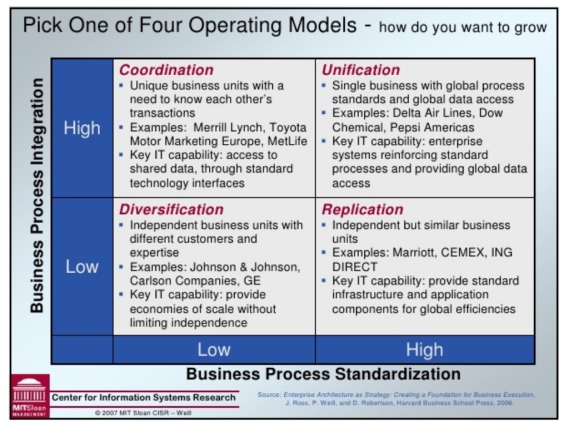Click on any Quarter to select your Operating Model

Replication
- Will probably always have multiple orgs
- Should consider deploying a managed package from a central org into all of the replicated business units to maintain pre-defined standard business processes.
TODOs
- Set up a Global Center of Excellence (CoE)
- Global CoE should manage business architecture and common standards ofall Salesforce orgs across the enterprise
- Each org will have its own CoE
- Each org will have its own Architecture Review
- Design, Review and Approve Technical Changes to the org (data model, config, custom-code)
- Should not allow to split orgs based on request-backlogs
- Create a roadmap across all the Line of Businesses (LOBs)
- Personally Identifiable Information (PII) (and Encryption needs) may have much different security requirements than other business data
- Work with Enterprise data architects
- Determine which data objects should or should not be in each org
- that each org is aware of any possible duplicated data objects
- The CoE should design and build a Reference Architecture that defines where and when an additional org is reasonable or necessary
- Establish Naming standards across the data model, configuration design, and custom code
- Adhere to strict separation of concerns in Apex Code Design
- Proper Security design to support profiles, perm-sets, role-hierarchy, sharing model, public-groups
- Consider cost of having multi-org
- Increased License cost if users need to access multiple-orgs
- Integration costs
- Cost of multiple sandboxes and release cycles
- Plan to implement SSO (single sign on) to maintain user accounts
- Select proper Integration Strategy for the business process and data across multiple orgs
- Plan to use managed packages to deploy from hub-org to spoke-orgs
- Make sure Customer-360 is possible with hub-spoke model